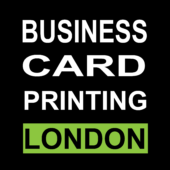Crafting an Effective Business Card: What to Include for Maximum Impact
In today’s digital age, where networking and connections are pivotal to success, the humble business card remains a potent tool for making a lasting impression. While digital platforms offer convenience, nothing quite matches the tangible exchange of contact information facilitated by a well-designed business card. However, with limited space available, it’s crucial to carefully consider what to include to ensure maximum impact. Here’s a breakdown of what elements to include on a business card and why they matter.
- Your Name and Title: The most fundamental aspect of any business card is your name and your job title. This provides clarity on who you are and what you do. It’s essential to use a font size and style that make your name stand out while remaining professional.
- Company Name and Logo: Including your company’s name and logo reinforces brand identity and helps potential clients or contacts associate you with your organization. Ensure the logo is clear and recognizable, even at a smaller size.
- Contact Information: At a minimum, include your phone number and email address. Depending on your preferences and industry norms, you may also include your physical address and website. Make sure all information is current and accurate.
- Social Media Profiles: In today’s interconnected world, social media can play a significant role in networking and business development. Including relevant social media handles, such as LinkedIn or Twitter, allows contacts to connect with you on various platforms.
- QR Code (Optional): Integrating a QR code on your business card can provide a convenient way for people to access your website, portfolio, or LinkedIn profile with a simple scan. However, ensure the QR code is functional and leads to valuable information.
- A Brief Description or Tagline: A concise tagline or description of your services can help potential clients understand what you offer and why they should reach out to you. Keep it brief and impactful, capturing the essence of what sets you apart.
- White Space and Design Elements: While it’s tempting to fill every inch of space on your business card, leaving white space can enhance readability and make key information stand out. Incorporate design elements that reflect your brand identity while maintaining a clean and professional look.
Conclusion:
Crafting an effective business card requires careful consideration of what information to include and how to present it. By including essential details such as your name, company name, contact information, and a brief description of your services, you can create a business card that leaves a lasting impression on potential clients and contacts. Remember to prioritize clarity, readability, and design elements that reflect your brand identity. With a well-designed business card in hand, you’ll be ready to make meaningful connections and leave a lasting impact in any networking situation.
